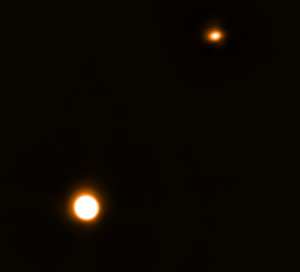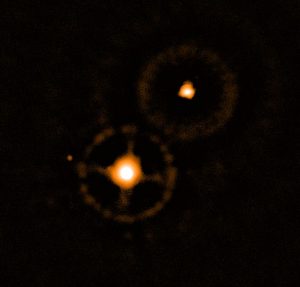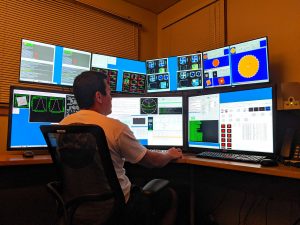JCMT astronomers were excited to capture the conjunction of Saturn and Jupiter on December 21st 2020 using SCUBA-2. The conjunction – although occurring every 20 years the closest one prior to 2020 was in 1623 and this won’t be matched again until the Jupiter-Saturn conjunction of March 15, 2080. Telescope operator Kevin Silva was on hand to capture this unique moment.
Aside from science, the telescope operators at JCMT do use Jupiter or Saturn for focusing, and occasionally Saturn for pointing. Dr Harriet Parsons was interviewed by Hawaii News Now about the event.

Jupiter and Saturn as observed by SCUBA-2 at a wavelength of 0.85mm. Remember we are not seeing our Sun’s light reflected off the planets, what we are seeing is the planet “glowing” thermally in submillimeter, similar to how the volcanologists monitor Halema`uma`u crate at night – the active volcano on Hawai`i. Jupiter we see is much brighter than Saturn, larger in angular extent. Saturn is slightly elongated – thanks to Saturn’s rings.

Jupiter and Saturn are so bright that we have a harder time seeing the fainter moons of Jupiter. In this resealed image we get to see Callisto, the moon of Jupiter approximately 3.8′ out from Jupiter. The Spikes we see around Jupiter is artificial – they are diffraction spikes caused by light bending/diffracting around the support beams of our secondary mirror. The brighter circles around Jupiter and Saturn are also artificial – they are caused from the sheer brightness of the planets.




